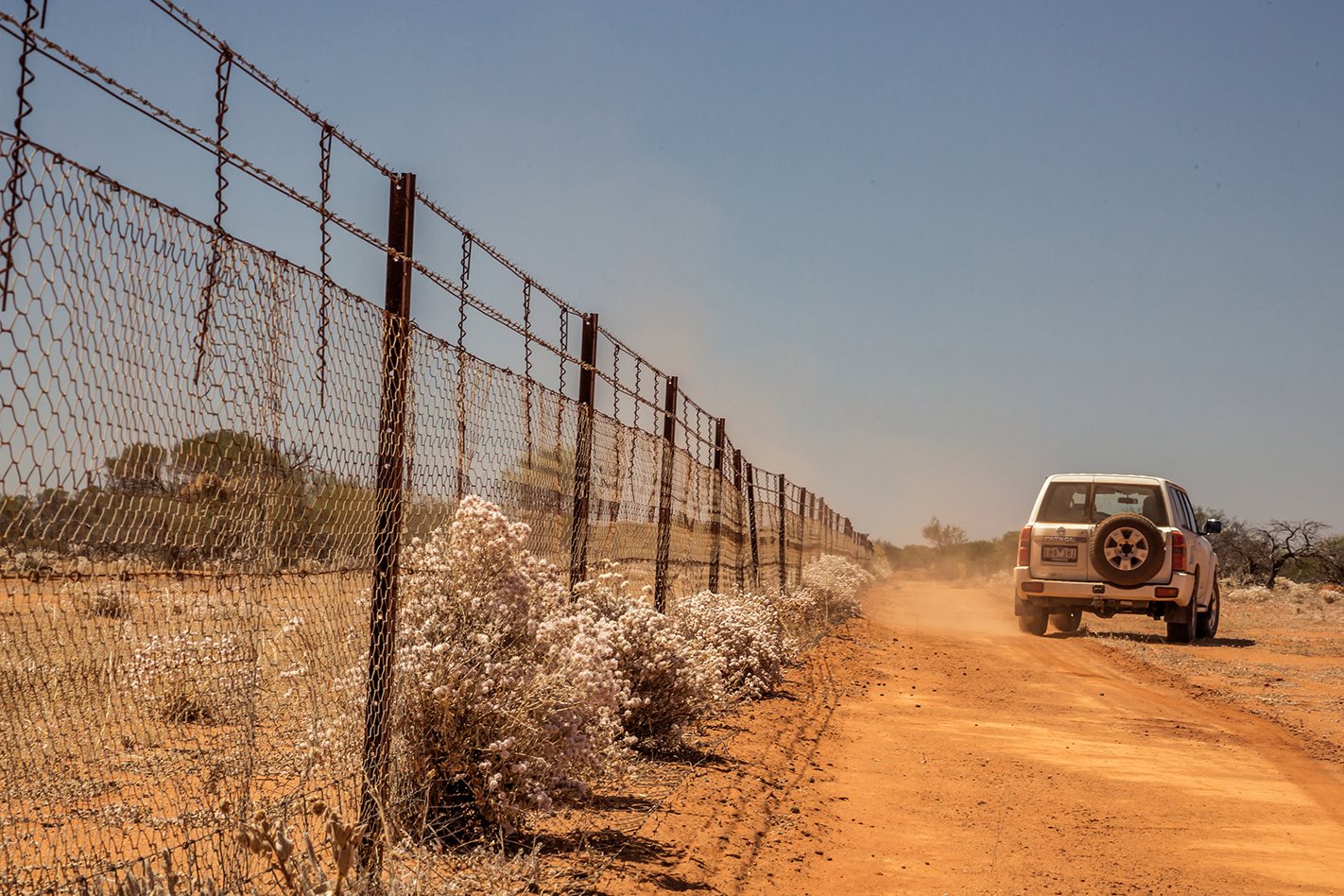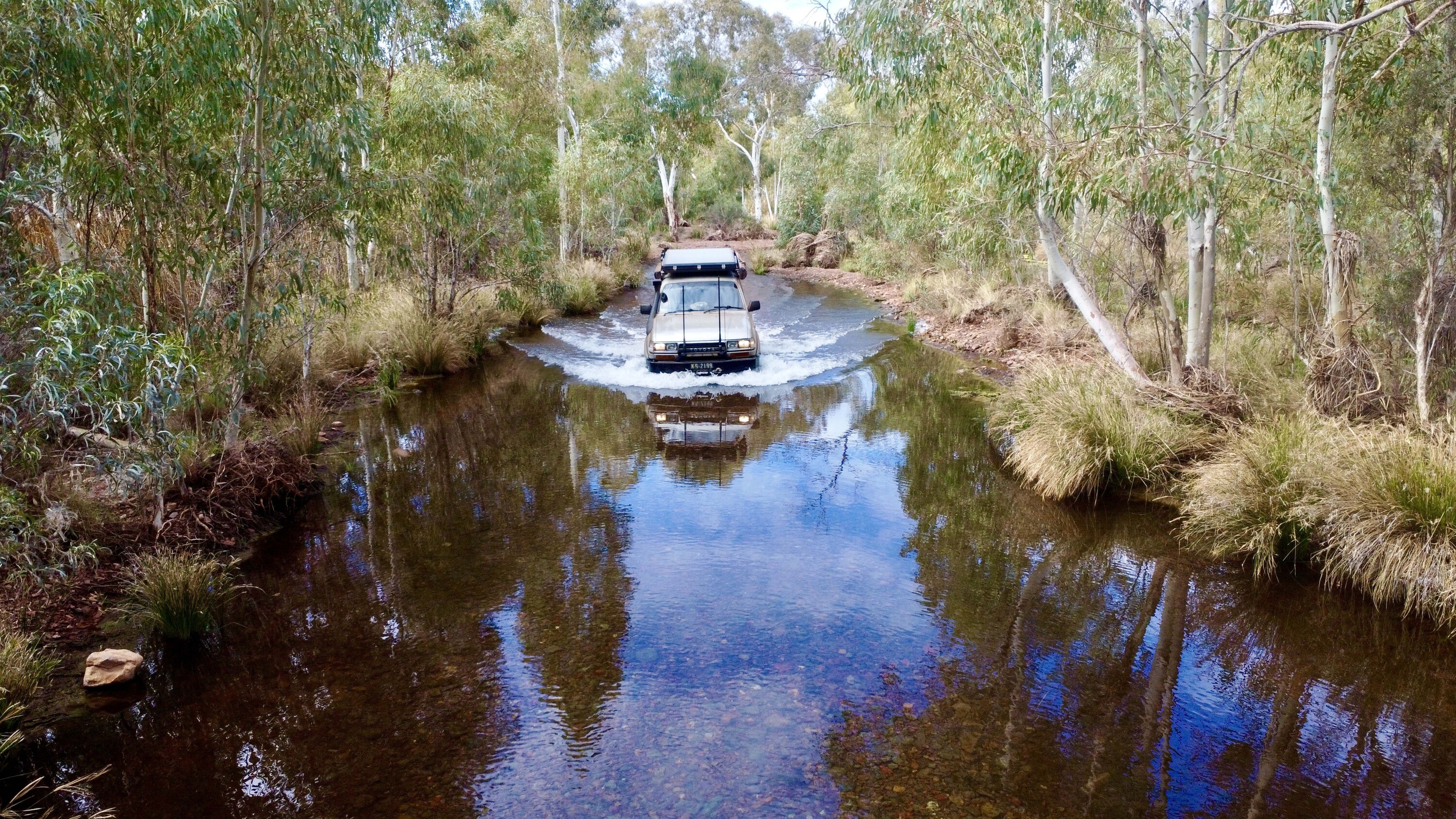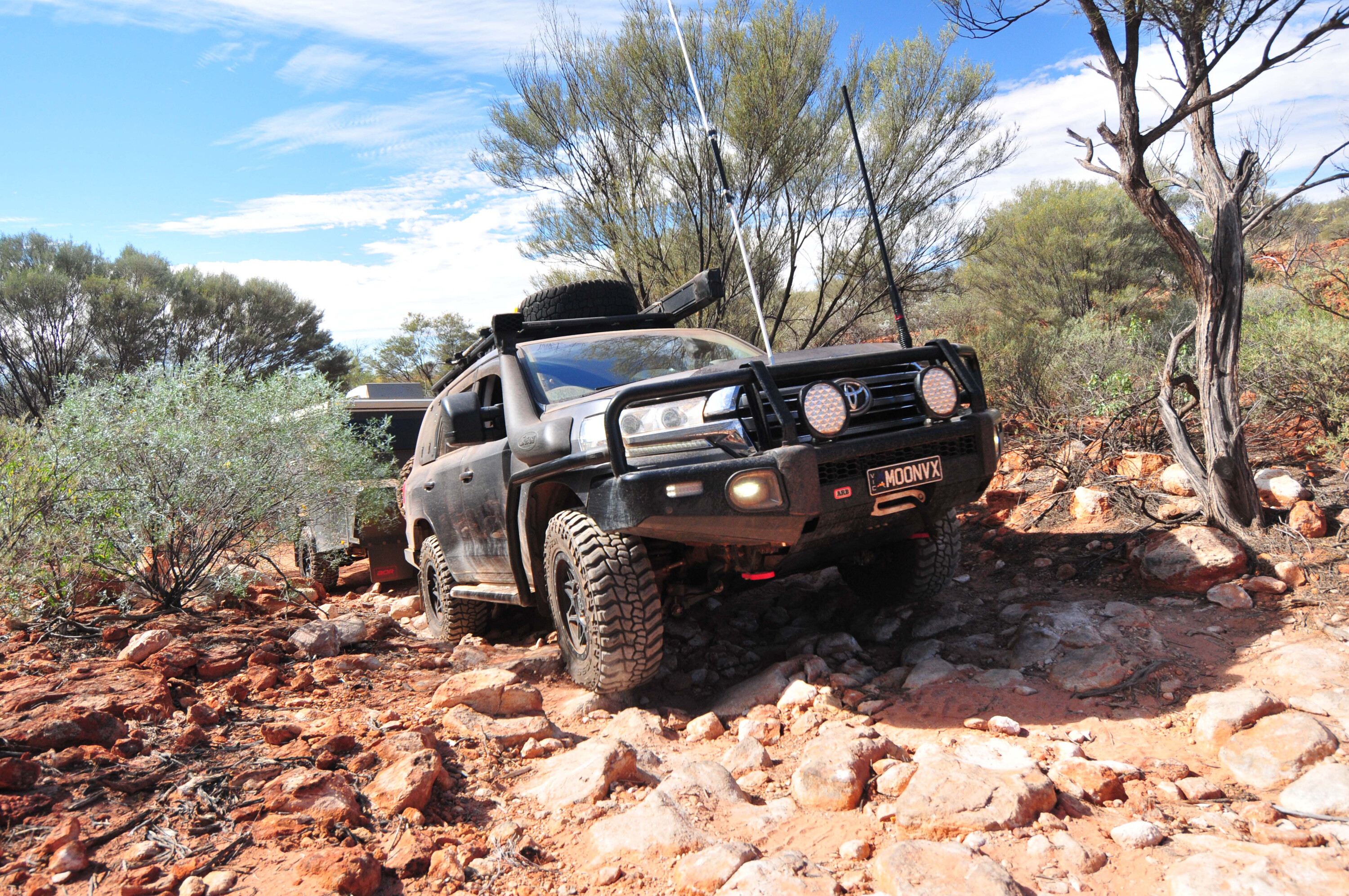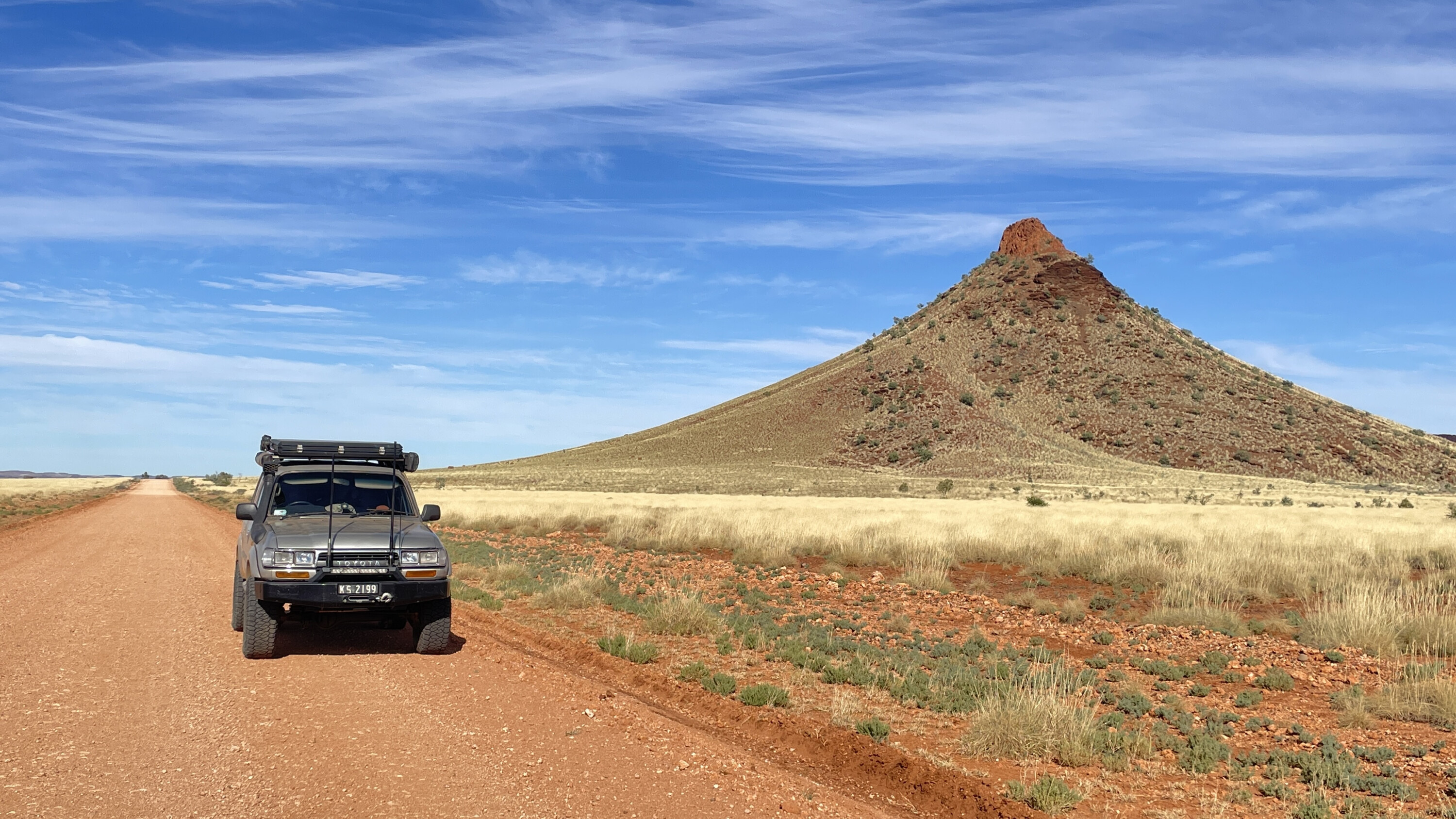THIS is not the toughest test of a vehicle you’re going to read in 4X4 Australia. This story is not about taking the Nissan Y61 Patrol to the limit of its capabilities – in more than 2000km of driving, low range was engaged for all of two minutes on two occasions. No, this is about enjoying an old mate and doing something it’s always been good at: taking us away from our urban lives on to roads less-travelled and places seen less often.
It’s as good a way as photographer – and inveterate explorer – Thomas Wielecki and I can think of to celebrate and farewell the Y61 Patrol, an off-road icon killed off by ever-more stringent emissions restrictions its ZD30 3.0-litre four-cylinder turbo-diesel engine no longer complies with.
Sure, the Y62 Patrol is still with us, but that’s a luxury petrol V8 boat and not the turbo-diesel workhorse the Y61 – or GU – has been. Like the Y60 (GQ) was before that and so on right back to the 60 Series that became famous for being the first vehicle to conquer the Simpson Desert.
Our plan for this drive is straightforward: pick up our Patrol ST four-speed automatic from Nissan’s Western Australian office in Perth then head east until we intersect the legendary Rabbit Proof Fence. Then turn north to follow it at far as we can and for as long as we can before the demands of modern, urban life call us back to the big smoke.
You’ve almost certainly heard of the Rabbit Proof Fence, and most likely because of the 2002 film of the same name that traced the journey of three young Aboriginal girls who fled confinement near Perth and followed the fence to their home in the outback. In fact, those three girls followed all three fences during their epic trek. They first hit upon number three, the shortest of the fences that runs east-west from Yalgoo to the coast at Kalbarri. Then they walked for a short distance along number two which runs from the south coast at beautiful Bremer Bay to its junction with number one west of Wiluna. Then they followed number one, the original and longest of them all at 1834km. It runs from Esperance in the south to Eighty Mile Beach on the north coast.
As the name suggests, the fences were built to hold back the tsunami of wild rabbits surging across the Nullarbor from the east. Construction of the first fence started in 1901 and by the time the project was finished in 1905 the rabbits had already got past it. So, Rabbit Proof Fence number two was built and then number three as the WA government fought a losing battle against Australia’s most populous and damaging introduced vermin.
The effort, the privations, the hard-manual labour of the men who built the fences cannot be underestimated. Much was carved through virgin bush, and a trench had to be dug to bury the fence’s distinctive hexagonal wire to prevent the pests from burrowing underneath. Jam tree and Mulga were used for posts because white ants don’t eat them, and reinforced iron gates were installed at appropriate farms and public roads.
Our starting point is Cunderdin, the wheatbelt town on the Great Eastern Highway that was headquarters for the construction of fence number two. These days, passers-by on the way to Kalgoorlie or Perth probably best know it for the unexpected sight of an Ettamogah Pub in the main street.
It’s also the home of a determined group of locals at the Cunderdin Historical Society who have been campaigning for more than a decade to have the fence officially commemorated. They have a plan, they have enthusiasm, they have belief, they have official support, but they have gained no financial backing from the state government.
An ambitious strategy to mark the various fences with a series of sculptures by Irish-born WA artist Charlie Smith across many shires and towns has proven too much for this small, elderly group. But their leader, Allan Rogers, is a determined man who has farmed along the fence his entire life. Now in his 80s, even though he struggles to walk unaided, his desire to celebrate the people and places of the Rabbit Proof Fence remains undimmed.
“Why did we take it up?” he asks rhetorically. “It was a huge program; it took a lot of men and lot of very ordinary hard work in isolated places.
“They had to cut the wooden posts out of the bushland that hadn’t been taken up for agriculture at the time. They had to erect the fence, put the netting on and a single furrow plow went along the entire fence to dig a trench so the netting was buried at last six inches down so the rabbits wouldn’t dig under it. That’s why we thought something should be done to commemorate it.”
We drive with Allan south of Cunderdin close to his family properties where he shows us an example of the original fence. The original jam tree posts and hexagonal wire are still in place, but steel stakes have been added to support the now rotting wood.
As a fence itself it is unremarkable. But it is remarkable to realise it is more than 100 years old, and when it was constructed none of the surrounding farmland existed.
Allan also shows us an original 112-year-old gate, with its distinct angled support at the top. It’s impressively engineered and as solid as the day it was built.
“They were all built like that,” he explains. “The support stopped them sagging. They had to be close to the ground to stop the rabbits digging underneath. They put them at convenient distances so farmers could get to the back of their farms.”
We tell Allan of our plan to head north and see what we find, and he is vague. “There is a 10-mile gate and an 18-mile gate. But I don’t know what happens beyond that.”
Time for us to find out. The map tells us there is a Rabbit Proof Fence Rd North that intersects with the highway, but we cannot find it. Instead, we literally drive past a sign that marks the spot where the fence once crossed the highway.
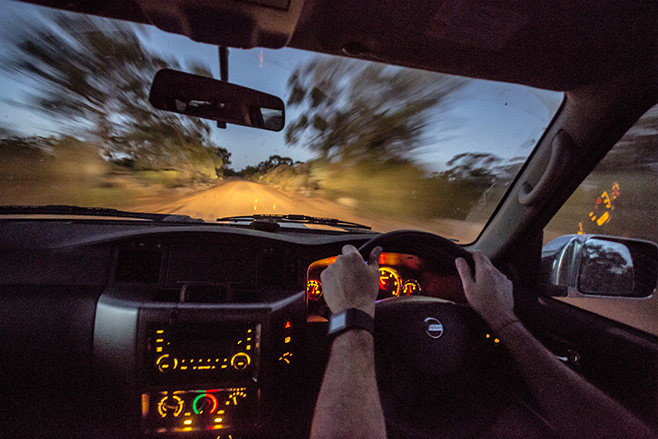
So, it’s back in the Patrol and west until we find a road north. It takes only five kilometres for us to intersect with the Three Mile Gate Road and we know what that means. Sure enough, a few kilometres east and we reach a five-way intersection. One finger board reads ‘Rabbit Proof Fence North’. We are on our way.
Our Patrol is absolutely bog stick. Nissan has slung us an extra spare tyre but that’s about all there is in the way of extras. It’s been a few years since I’ve driven one and initially the reunification has its issues. It’s the slowest vehicle I have driven in ages, it drops gears on alarmingly shallow inclines and the engine sounds like it’s tearing apart under acceleration. It steers approximately, has a massive turning circle and heavy low-speed steering. But as time goes by under a cloudless sky the Patrol makes more and more sense as we cruise north, an orange plume coating its rear-end and expanding into a huge dust cloud behind us.
Sitting on a steady 2400rpm at 120km/h, the long wheelbase Patrol eddies and rolls and soaks up the corrugationson this long straight-to-the-horizon dirt road, happily cruising in fuel-saving rear-wheel drive. It’s big, comfy and provides a chilled comfort zone away from the 35°C temps outside.
We are following the tracks of the patrolmen who maintained the fences for the first 50 years after they were built. These must have been tough men, tending to their allotted section of the fence alone for months at a time. Riding horses, camels or bicycles, their job was to patch any holes, repair any damage caused by such things as fallen trees or fire and make sure the locals were doing their part by closing the gates after themselves.
“There were very strict controls,” explains John Lynne, a third generation farmer who owns farms on either sides of the Rabbit Proof Fence north of Cunderdin. “You couldn’t go through the gate and leave it open or you would get fined. It was illegal to bring a rabbit to this [west] side dead or alive. The patrolman had a lot of powers.”
John is a friendly, chatty bloke, who is happy to take us to a well where a patrolman used to camp in the old days. It’s hidden away in a bush reserve. Someone has long since thrown fence wire down the hole.
John stands atop the water pipe that runs alongside the fence here: “See those trees down there? That’s where Mum’s parents came and settled and took up virgin territory in 1911.
“They had ground both sides of the fence and it was patrolled once per week by the patrolman. We are 20 miles out of town and they had to have water every 20 miles so they could make camp there. My grandparents used to nick water from the well. But not when he was there.”
Standing with John at dusk on the water pipe it’s easy to appreciate the beauty of this place. A cooling breeze has brought the temperature down, and the sunset is being exaggerated by the smoke from burning-off to the west. The flies have gone. The wheatfields of John’s farms surround us.
The morning brings a blazing sun, an endless blue sky and a return to the road north. For hour-upon-hour we seem stuck in a loop as the red road runs arrow-straight from one far distant crest to another. Within the vast valleys wheatfields stretch from horizon to horizon and dust clouds mark where GPS-guided headers are harvesting.
Crossroads invariably bear the family names of early settlers in the area: Mason, Keogh, Solomon, Lynne. Every now and then an original gate reassures us we are on the right track, but at times we have to divert away from the fence. When the WA government decided in the 1950s the fence was no longer worth maintaining it offered the farmers the chance to buy it and the chain-and-a-half (about 30 metres) of land next to it. Most didn’t, but where they did, detours are required.
Each time we find our way back to the ribbon of hexagonal wire. Then, near Dalwallinu, and for no good reason, a signpost insists Rabbit Proof Road North goes east. As we stand there debating what to do, Keith Carter pulls up in his Toyota Hilux and asks if he can help. He confirms the sign is pointed in the wrong direction, then explains we are lucky to be seeing it at all.
“I am on the local council and I don’t know why they haven’t thought about selling Rabbit Proof Fence signs in Dalwallinu because it wouldn’t be two weeks pass that this sign up here gets nicked.
“Oh yeah, signs gone again, ring up again ‘we need a new sign’.”
Keith’s a genial fellow. We’d intercepted him on his way up the road to a farm shed to get some parts for a header and we end up standing at that intersection talking for 30 minutes. Then we tag along to check out the original Rabbit Proof Fence gate on his property.
Keith’s parents shifted to their farm on the fence in 1928 from the Victorian town of Sea Lake. He’s lived his whole life next to it but admits he’s rarely thought about it.
“It’s just a name now really,” he ponders. “I don’t even know how long it kept the rabbits out for.”
There is no doubt the fence is fading away. It has been completely renewed in some places as time invariably takes its toll; or it is crumbling into the salt flats where no-one owns or cares about it. When we cross the Great Northern Highway east of Wubin there is a sign marking the grave of a worker who died building the fence. It’s a simple white cross and there are no details. Back then this grave would have been a lonely and isolated spot, now trucks and cars roar past just metres away.
Finally, the ground is changing. We reach Yalgoo, which describes itself as ‘where the outback begins’. Out here the bush is a stunted greyish green and we are encountering wildlife on the roads: big lizards, kangaroos, emus and, yes, even rabbits. In the evening, a massive mining site rears all lights ablaze out of the bush. The next morning, we walk hunched through an old mining tunnel infested with micro bats that flutter through our hair as we disturb them.
We are only 600km from Perth but it feels a million miles from that bustling metropolis. Some of the little towns we go through seem energised while others are struggling, rows of closed shops lining their long main streets.
Giant trucks roar through at all times of the day and night. Every second vehicle on the road is a crew-cab ute dressed with a set of flashing lights on the roof and the signage of a contractor on the door. Helmets and hi-vis vests are commonplace. At night, like worker bees returning to the hive, the utes and their occupants congregate at the motels in the towns of Cue and Mount Magnet.
It’s in Mount Magnet that the Patrol has its only issue. We pull up outside the pub looking for a place to stay, only to hear the distinctive hiss of a deflating tyre. After hundreds of kays on dirt roads we’ve picked up a puncture on the bitumen just outside town. The change is easily done and the next day in Yalgoo the helpful guys at the shire depot pump up our plugged reserve spare.
The fence is still with us, but now it’s officially maintained and that means it’s off limits. Now known as the state barrier fence and targeted at wild dogs and emus more than rabbits, the signs say there are cameras, there are fines and there are poison bates. It is regularly patrolled and, frustratingly for us, it looks to be in perfect condition.
Instead, we head off to explore Big Bell, a ghost town that was built in the 1930s to support a gold mine that closed in 1955. At its height, 850 people lived here. All that’s left standing are the shell of a church and an imposing two-storey hotel.
As dusk closes in and night takes hold, being in this place is unsettling. Thomas is casting shadows on the wall with his lights and flash and I am waiting for a ghostly piano to start playing or to catch a glimpse from the corner of my eye of a ghostly figure flitting by. Not until we are driving away does the uneasy feeling start to seep from me.
This is a tough and harsh landscape, searingly hot and baked hard. Damian Morrissey has lived out here all of his life; he is 62 and looks like he has been in the oven too long. We find him on Pindathuna Station, north of Yalgoo. We’ve come here because it seems to us that fences two and three intersect somewhere on this property. Time is running out and we want to see it before we have to head for home. Damian is initially cautious and reserved, suspicious of these city-slickers who have arrived unannounced at his isolated door on a Sunday afternoon. But he warms up, confirms we are in the right vicinity and points us along the track we need to follow to get to the junction.
Pindathuna was once a busy station, running many thousands of sheep. Now it looks neglected and a bit sad. Dilapidated and rusted machinery lays strewn about, and buildings are in a poor state of repair. Despite good weather in the last few years Damian says wild dogs have impacted this property like the rabbits never did.
“There have always been rabbits here,” he tells us as he rolls a cigarette. “It was built as a rabbit fence. But the rabbits had got through by the time it was finished. Now it’s used as an emu fence, but there are just as many emus on the inside as the outside. They just breed up.
“The biggest problem now is the dogs. Before they came here we had thousands of sheep roaming everywhere. People come up here and say we are going to go out and shoot those dogs. But you can drive around for six months and not see one. But they are there alright, you see their tracks.”
Damian’s instructions are straightforward, but we still manage to get lost following the wrong track down the wrong fence line. The Patrol’s low range is selected as we cross and re-cross a sandy creek bed. This is no challenge, and the Nissan almost sneers in contempt at the obstacle.
Eventually we find the junction. The well-maintained fence number three runs west to the coast, while fence number two heads north-east to hook up with fence number one. It’s a small clearing in the scrub, nothing that special about it really. Except for one thing, those three young girls walking home would have passed through here 85 years ago.
While they were headed north, it’s time for us to return south. Their journey took two months; we have driven two thirds of it in five days and seen some incredible places and met some great people. Our Patrol hasn’t missed a beat and has proven the most reliable and loyal companion.
There are parallels to be drawn. Like much of the Rabbit Proof Fence, the Y61 Patrol is officially past its used by date, but just like the fence, it would be nice to think many Patrols will survive for years to come. Renovated and upgraded, both will hopefully continue to be an important part of the Australian bush.
- TRAVEL PLANNER THE vast majority of time following Rabbit Proof Fence number two will be spent on graded and pretty-well maintained gravel roads. Occasionally, you have to be a bit of a detective to stay in contact with the fence, but that’s all part of the fun. In other places it is well sign-posted.
- FUEL & SUPPLIES THERE is no drama in this regard, as sizeable country towns are never too far away from the route. We topped off every morning to be safe. If you shop at the IGA in Yalgoo make sure you say hi to Raul and Ivonne for us. Note: once away from the metro area, Telstra is the only phone network that consistently works.
- GETTING THERE WE started from Perth because that’s where we collected our Patrol, but if you’re coming from the east or north there are plenty of alternative places to pick up the fence. Remember, we only followed fence two, but you could follow one or three.
- TRAVEL DISTANCES RABBIT Proof Fence number two is more than 1100km long, but we’re not talking about severe off-roading here. You won’t be able to follow all of it, as the working sections are off-limits to the public and other sections have been resumed as farmland. This gives you the opportunity to explore interesting places like the Big Bell ghost town near Cue.
- MAPS THE quality of mapping of the Rabbit Proof Fence varies enormously. We ended up buying plenty of different maps along the route – even then we had to wing it a bit.
- BEST TIME TO TRAVEL Late spring through early autumn.
- RESTRICTIONS AND PERMITS Working sections of the fence are off-limits to the public, although you can apply for a permit. We got knocked back.
The first few minutes of our relationship didn’t bode that well, though. Still in big-city mode I noted the lack of modern comfort features like sat-nav and Apple CarPlay. Then I noticed the sheer size of the thing and the weight of its steering as we launched into the Perth metro traffic. Geez, heavy steering or what!
But the farther we left the big smoke behind in our mirrors the more the Patrol impressed. This is where it belongs. Bowling along gravel country road at a steady 100-120km/h in the Patrol is a great way to look out on the world, as it strolls along soaking up the rough stuff.
The big armchairs up front are comfortable and there’s an ocean of room in the back to store our possessions and gear, as well as an extra spare tyre.
It’s by no means cutting edge: the ZD30 engine isn’t what you’d call a superstar of power, torque and refinement, and the four-speed auto is an early and frequent downshifter at any suggestion of an incline.
There’s no doubt the new Y62 Patrol would provide a more modern and chilled experience, but with that big V8 engine thirstily sucking PULP in the mid-to-high teens per 100km, even a 140-litre fuel tank sounds a bit underdone.
The Y61 by contrast has a 125-litre tank and during our 2000km-plus expedition swallowed diesel at a friendlier rate of around 11.0L/100km. That’s not cutting edge, but it is acceptable.
Apart from a flat tyre, the big fella never let us down. Firing up on the first crank, negotiating any challenge we threw at it – none were extreme it must be admitted – and taking us to some truly beautiful places in the middle of absolutely nowhere.
Lovable, reliable and, on a dirt corner, you can it get its tail wagging!

